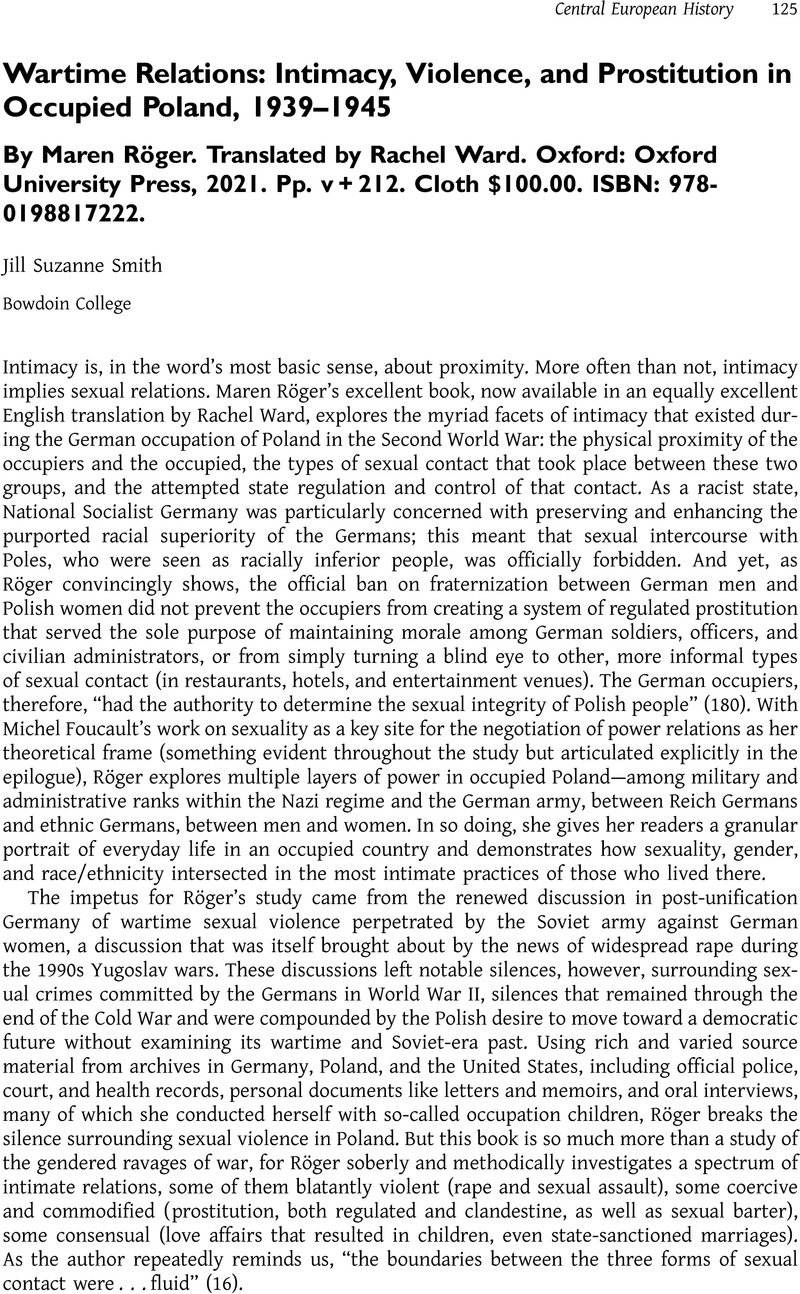No CrossRef data available.
Article contents
Wartime Relations: Intimacy, Violence, and Prostitution in Occupied Poland, 1939–1945 By Maren Röger. Translated by Rachel Ward. Oxford: Oxford University Press, 2021. Pp. v + 212. Cloth $100.00. ISBN: 978-0198817222.
Review products
Wartime Relations: Intimacy, Violence, and Prostitution in Occupied Poland, 1939–1945 By Maren Röger. Translated by Rachel Ward. Oxford: Oxford University Press, 2021. Pp. v + 212. Cloth $100.00. ISBN: 978-0198817222.
Published online by Cambridge University Press: 24 March 2023
Abstract
An abstract is not available for this content so a preview has been provided. Please use the Get access link above for information on how to access this content.

- Type
- Book Review
- Information
- Copyright
- Copyright © The Author(s), 2023. Published by Cambridge University Press on behalf of Central European History Society of the American Historical Association


